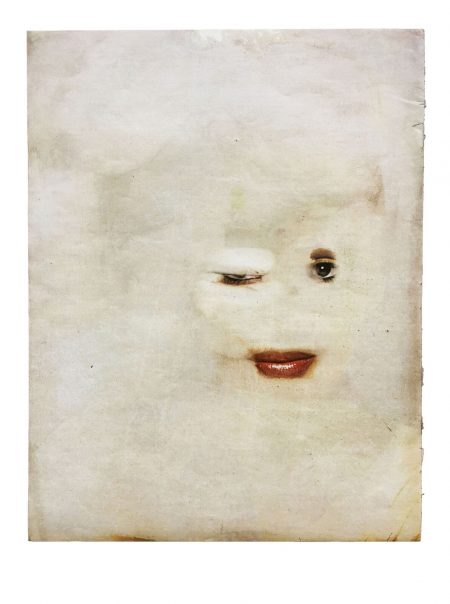Noel Anderson’s “Study for a Blak Origin Moment” appears at Miller Gallery, located in an upscale neighborhood of Cincinnati. The show runs in conjunction with Anderson’s solo show at the Contemporary Arts Center downtown, his first solo show.
Without a name or a title to go off, first impressions of the work do not unveil a specific identity. Contrary to possible assumptions, the gallery is not full of works of overt black masculinity. Instead, black masculinity is examined through an intersectional lens, which establishes the structure through which to view the work. Paradoxically, as the viewer confronts what they are looking at, they become more aware of their own specific identity.
In a spirit of inclusivity, Anderson created an entire series of worked-over Ebony magazine pages that feature homemaking and beauty themes. The “queer platform” that Anderson connects to reaches out to black female identity and queer identity at the same time. Chemically eclipsed portrayals of black femininity on the archival pages of the late 1970’s not only reference beauty treatments, but the feminizing of black masculinity that is often discussed within a white patriarchal framework. The advertisements’ texts, that were once direct and forceful, are made poetic with a bleaching wash that renders most subliminal. Some words are partially blanked out and emboldened, simultaneously. On one work, all is totally obliterated except for a set of ruby lips, and a pair of eyes that appear to wink as they peak out from perpendicularly arranged rectangular openings. A lone Kraft mustard ad fully covered in a yellow tinge, might be the only pulled image that references a stereotypical black masculinity.
The rest of the show is more a reflection of the CAC show; a floral tapestry over a frame, an African mask mounted on a base, Anderson wearing a blond wig, Anderson in his graduation hat, and more painterly severely distressed and coated tapestries.
Considering Anderson’s outspoken personal politics, a dialogue seems to be what he wants. But the lofty objective realm of discourse, and certain locational politics might not be enough to get the conversations that are desired. The subtext to be extracted from this show might be best achieved through the immersive tactics of a subjective approach, but will the show receive the full attention it needs?
–Libby Andress
